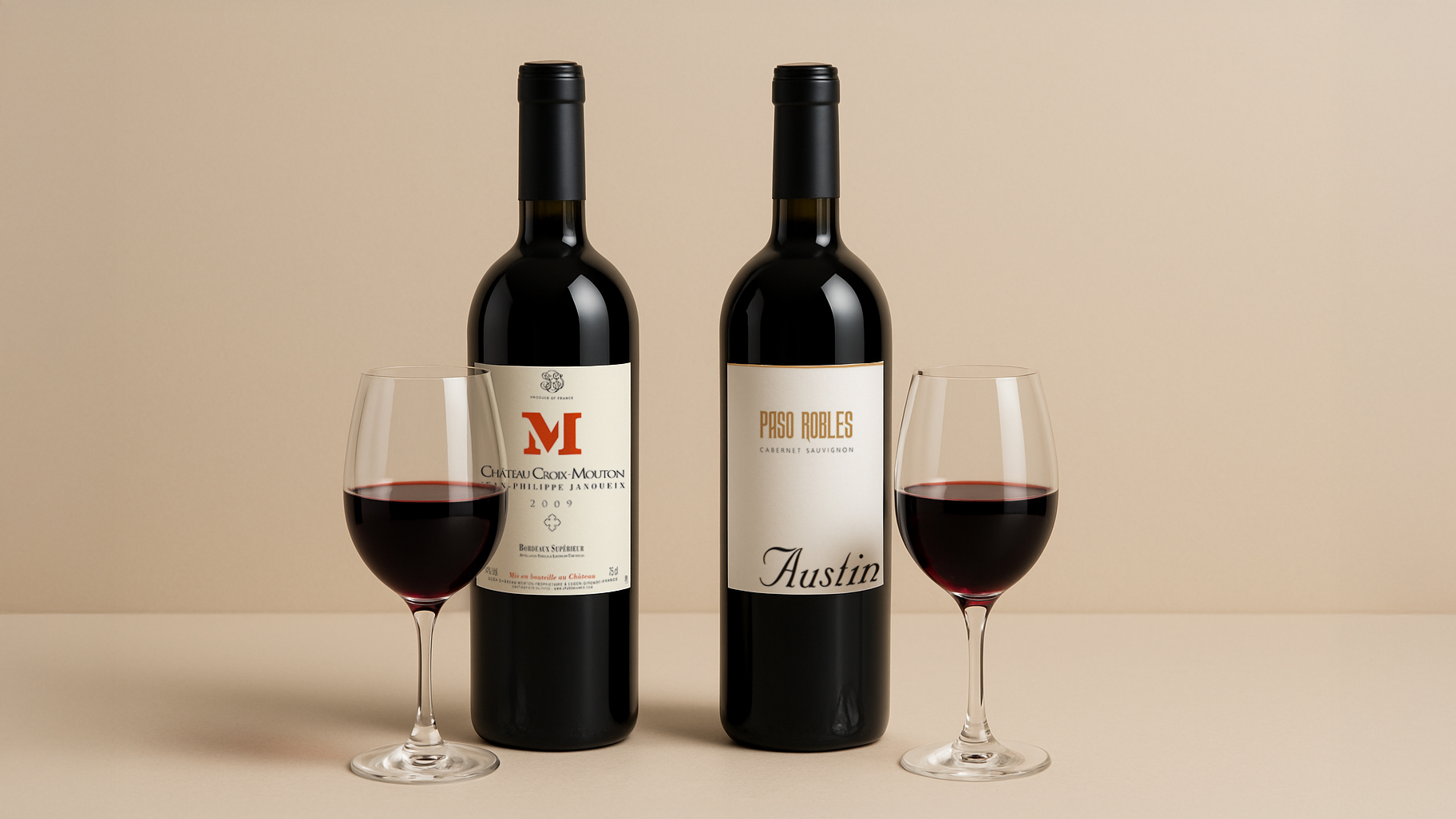

The 4 Biggest Lessons You Learn from Side-by-Side Tastings
If your goal is to improve your palate, nothing works faster than comparative tasting.
You start to build reference points. You understand how grapes behave in different climates. You also see how structure, food, and age affect the wine in your glass.
In this issue, you’ll learn four lessons that stand out the most. These lessons go beyond memorizing facts or flavor lists. They show you how to train your senses in a practical way.
Whether you’re a wine student, a server at a restaurant, or just someone who wants to feel more confident, these comparisons will push your skills forward.
Lesson 1: You Notice Differences Faster
When you drink a single wine, it’s hard to know what stands out. You might notice that it tastes fruity, or that it has some grip, but you don’t have a baseline for comparison. Side-by-side tastings change that.
Imagine two glasses of Chardonnay: one from Chablis in France, the other from California. When you taste them back to back, you immediately notice the contrast. The French wine feels lean, tart, and mineral. The Californian version tastes rounder, riper, and more buttery. Without having both in front of you, those differences might fade.
This lesson teaches you that tasting isn’t about searching for hidden notes. It’s about comparison. Each wine defines the other. Over time, you start to build a mental catalog: this is what cool climate Chardonnay tastes like, and this is what warm climate Chardonnay tastes like. That reference point becomes the foundation for blind tasting, food pairing, and even shopping with more confidence.
Lesson 2: You Understand Structure, Not Just Flavor
Most people start with flavors when describing wine. They say “it tastes like cherry” or “I get lemon.” That’s useful, but structure is what separates beginner tasters from advanced ones. Side-by-side tastings make structure impossible to ignore.
Structure is acid, tannin, body, and alcohol. If you line up a Beaujolais next to a Napa Cabernet, you’ll see how different they feel. The Beaujolais is light in body, with high acid and soft tannins. The Cabernet is full-bodied, with firm tannins and higher alcohol. These differences are obvious when you move between glasses.
By practicing this way, you stop thinking only about flavors. You start to notice how the wine feels in your mouth. Is it sharp or smooth? Light or heavy? Drying or soft?
Structure connects directly to grape type, climate, and winemaking choices. Once you understand this, you can predict how a wine will taste before you even open it. That’s when you move from guessing to real understanding.
Lesson 3: You See How Food and Wine Interact
Wine doesn’t exist in a vacuum. It’s almost always served with food, and food changes the way you taste wine. A side-by-side tasting with food shows you this instantly.
Try two wines with a salty cheese. A crisp Sauvignon Blanc will taste brighter and more refreshing, while a bold Shiraz may feel heavy or bitter. Now add the same wines to a rich, creamy pasta. Suddenly, the Sauvignon Blanc feels too sharp, while the Shiraz softens and balances. By going back and forth, you see why certain pairings succeed and others fall apart.
This lesson builds confidence when you’re ordering at a restaurant or planning a meal at home. Instead of memorizing pairing rules, you’ll have lived experience of how acid, tannin, fat, and salt interact. It’s not abstract knowledge. It’s in your mouth.
Over time, you’ll stop second-guessing yourself. You’ll understand why pairings work, and you’ll know how to choose wines that make both the glass and the plate taste better.
Lesson 4: You Learn How Wines Evolve
Side-by-side tastings also reveal how wines change with age. This lesson is eye-opening because you don’t have to imagine aging—you see it in real time.
Pour a young Rioja next to a bottle that’s 10 years older. The young wine will show bright red fruit, fresh acidity, and firm tannins. The older bottle will feel softer, with dried fruit, leather, and earthy flavors. By comparing them, you see how fruit fades and secondary notes rise. You also learn which styles you prefer: fresh and lively, or mature and complex.
This knowledge helps you when buying or storing wine. You’ll understand which bottles are worth aging and which ones are better to drink now. You’ll also gain perspective on why certain wines have reputations for longevity. Once you’ve done this exercise a few times, the mystery of “cellaring” disappears. You’ll know, from direct experience, how wines evolve and what that means for your palate.
Conclusion
Comparative tastings are the fastest way to grow as a taster. They sharpen your senses, teach you structure, reveal food pairings, and show you how wines age. More importantly, they give you confidence.
You don’t need to start with a dozen bottles. Two or three wines are enough. Focus on the contrasts, take notes, and trust what you notice. Each time you do this, you’ll add another layer to your understanding.
The lessons aren’t abstract. They’re in the glass, waiting for you to see them. And the more you compare, the more skilled and confident you’ll become as a wine drinker.

